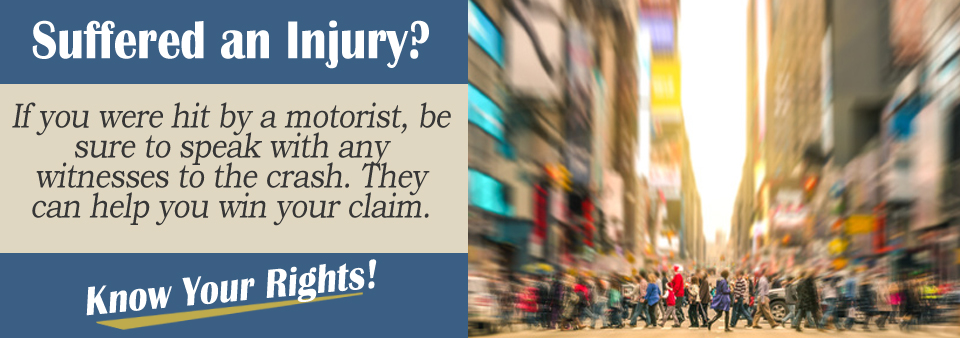If you have been injured in an accident and you filed a personal injury claim, the key to proving your claim is providing enough evidence. You must preserve conclusive evidence so you can build a strong case.
Go Back to the Scene
You need to go back to the scene of the accident so you can collect evidence. You must look for contributing factors that might have played a role in the accident. Here are some examples:
-
Check for a defined crosswalk
Look to see if the intersection is visually clear
See if the driver’s vision was blocked by shrubs or weeds
You should photograph and document every possible detail. Every detail you can accurately document will help support your claim and prove that you are not at fault for your injuries. Proving who is liable is important to winning a personal injury case.

Take Photographs
You need to get photos of the accident scene. Since you were walking and there was a car involved, you should get photos of the accident scene from all different angles and document the line of site for the pedestrian and the driver.
Make sure you take photos on the same day of week and at the same time of day your accident happened. These details will help show what traffic was like at the time of the crash as far as traffic flow and the location of the sun goes.
You should get the help of someone for documentation. You can have a family member or even your personal injury lawyer record the details that go with each photo you take. This should include the angle, the location, the time, and even the date the photo was taken. This will help support your claim as well.
Protect the Physical Evidence
Physical evidence is needed to help prove accident fault or liability. While photos help preserve physical evidence, especially if they are taken shortly after an accident happens and before the accident scene is altered, other physical evidence can be beneficial as well.
Since you were hurt in an accident that involved a car, you want pictures of the damage to the vehicle if possible. You should keep your torn and bloodied clothing that you were wearing at the time of the crash. This can help show how hard the impact was or the speed of the car when it hit you.
You should also take photographs of your initial physical injuries. Maintain thorough medical records and make sure your personal injury attorney has access to the records from all the doctors who treated you for injuries after the accident.
Locate Witnesses
Witnesses can be very important in your personal injury case. If you don’t have the names and contact information of the witnesses, you might be able to track them down by returning to the scene of the accident on the same day of the week and at the same time as the accident. You should locate witnesses as quickly as possible.
The Role of a Personal Injury Attorney
Your personal injury attorney can make sure all documentation is put in order and that your evidence is properly filed so support your claim. Your personal injury attorney can improve your odds of being awarded compensation.